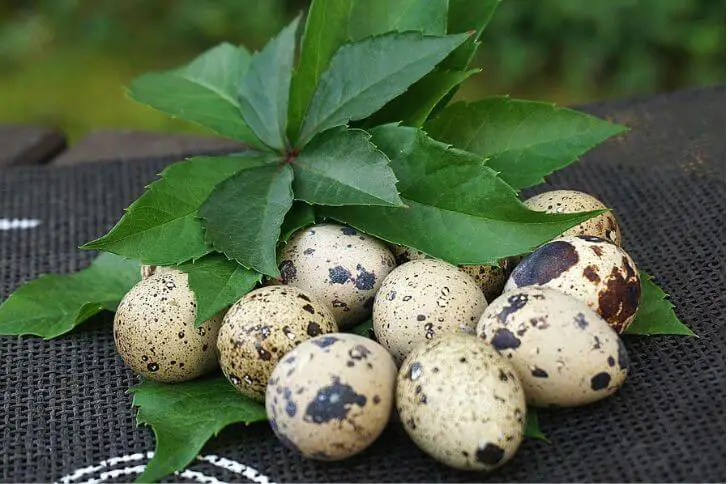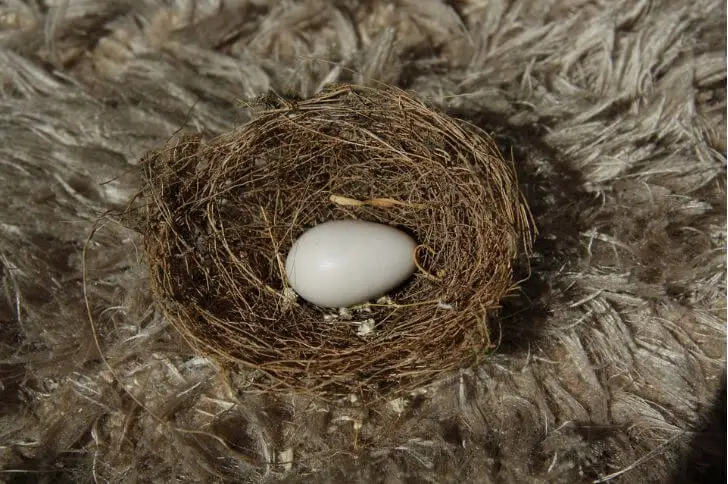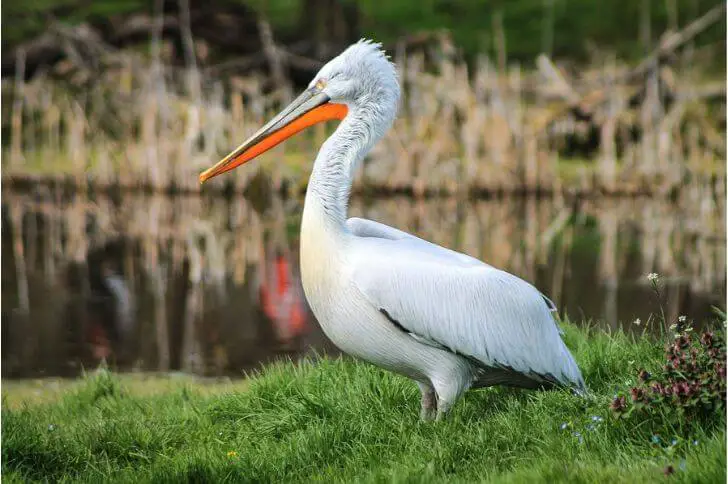What months do little blue herons lay eggs?
A medium size wading bird, little blue herons are water birds that range from North America to Peru. These birds breed from April to July, and they typically lay 3-5 eggs per clutch.
The little blue heron is a shy bird that is often seen solitary or in pairs. During the breeding season, these birds can be found in colonies of up to 100 pairs. So if you are an avid bird watcher, lookout for baby little blue herons from April to July.
Where do little blue herons nest?
The nesting season for little blue herons typically begins in April and can last for up to three months.
Male little blue herons take the lead when it comes to finding and preparing building materials while the female takes charge of nest construction. Little blue herons construct their nests out of sticks lines with softer vegetation. It is not uncommon for them to build their nests close together with other members of their species. This creates an ideal environment that helps protect them from potential threats while they raise their young.
Also their nests are smaller compared to those of great blue herons; they are about 1.5 feet in diameter.
What do juvenile little blue herons look like?
Juvenile blue herons are a little different than their adult counterparts. For one, they don’t have the adult plumage. They’re also covered in downy white feathers, which eventually fall out and are replaced by regular slaty-blue feathers.
Also note the coloration of their long feet. Their feet are yellow while adult little blue herons have dark feet. And like adults, little blue heron fledglings have sharp two-toned bills.
How big are blue heron babies?
Blue heron juveniles are fascinating creatures and their size is one of the main sources of curiosity for many. While adult little blue herons typically measure from 22 to 29 inches, juveniles vary dramatically in size. On average, juvenile blue herons measure anywhere from 14 to 20 inches in length. Also, they tend to weigh much less than their adult counterparts; with an average weight of just 0.5 pounds.
How old are little blue heron juveniles?
A juvenile little blue heron is typically between 4 weeks to 2 years old. During this time, they shed their feathers and are able to climb out of the large nests.
Related Read: Learn about the Juvenile Great Blue Herons
What do juvenile little blue herons eat?
A juvenile little blue heron will typically eat small fish, frogs, crayfish, and insects. Their diet varies depending on food available in their habitat. For example, if there are more insects available, the heron will eat more insects. If there are mostly small fish available, the heron will primarily eat fish and crustaceans. They have been known to also eat lizards.
How long does it take a fledgling little blue heron to fly?
It takes a little blue heron about 3 weeks to learn how to fly. The heron will first start by flapping its wings and trying to take off from the ground. After a few days, the heron will be able to take short flights. By the end of the third month, the heron should be able to fly long distances.
When do juvenile little blue herons molt?
Juvenile little blue herons molt, a process in which old feathers are replaced with new ones. This species of heron undergoes a complete molt and typically takes place in spring. During this time period, their bodies transition from all white to having slate blue patches on their back and wings and by the end of summer they’ll have the adult plumage; gray blue body and a purplish-brown head.
Molting is essential for juvenile little blue herons as it allows them to develop more appropriate flight capabilities and waterproofing abilities needed for warmer weather conditions. Without proper molting abilities these birds would not be able to survive harsher climates or environments with extreme temperatures – both cold and hot. Additionally, molting also helps keep their plumage looking healthy and vibrant throughout the year.
How long do baby blue herons leave the nest?
According to experts, baby blue herons typically leave the nest after about 6 weeks. During this time, if you live near a nesting colony, you’ll notice them climb out of the nest to look around.
Once the baby blue heron leaves the nest, it will begin to learn how to fly and hunt on its own. This process can take several weeks or even months. During this time, the young bird will be vulnerable to predators and other dangers. Therefore, it is important for parents to keep an eye on their young ones during this time period.
What do you feed a little blue heron fledgling?
A little blue heron fledgling needs a diet that consists mainly of small fish. The best way to feed a little blue heron fledgling is to use live bait, such as minnows or earthworms. You can also use frozen bait, but it is not as effective. If you are using live bait, make sure to hook the bait through the lips so that the heron can easily swallow it.
Where do little blue herons sleep at night?
Research has shown that most little blue herons tend to roost in trees either alone or in small groups during the night. They prefer areas with plenty of foliage for cover, such as swamps, marshes, ponds, and other wetlands. They also tend to avoid roosting on the ground unless absolutely necessary.
When selecting a sleeping spot for the night, little blue herons usually choose branches close to each other so they can huddle together for warmth and protection from predators. During colder months, flocks may gather together on larger branches or even entire tree tops to stay warm throughout the cold winter nights.
Do little blue herons come back to the same nesting spot?
For many animals, returning to the same nesting spot year after year is key to raising a successful brood. But for some creatures, like the little blue heron, this behavior may not be so important.
A recent study found that while most little blue herons do return to their natal rookeries to breed, a significant number of them will travel long distances to find a new mate and build a nest elsewhere.
So why do these nomadic herons bother leaving their homes in the first place? It could be that overcrowding at traditional breeding sites drives them away in search of more space. Or it could simply be that they’re following their instincts to explore and find new territories.
What do you do if you find a juvenile little blue heron?
If you find a juvenile little blue heron, the best thing to do is to leave it alone. Also little blue herons are protected (Migratory Bird Treaty Act). If the bird appears to be injured, you can call your local wildlife rehabilitation center for help. Otherwise, just enjoy watching it from a distance!
Sources:
https://en.wikipedia.org/wiki/Little_blue_heron
Hi, my name is Steve. My friend and I started the spanishbirdguides.com to share our passion with other like-minded people. So, if bird watching is your thing, you’ll love this blog. I’ll share what I’ve learnt about both local birds and those found in other parts of the world. Also, I’d love to hear your experiences.


